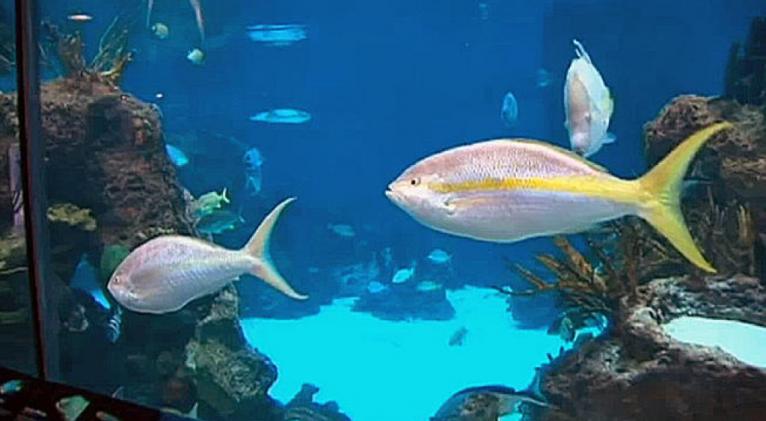Florida Aquarium leaders visit Cuba
especiales

Leaders from Tampa's Florida Aquarium visited Cuba over the weekend to discuss a possible partnership with the island nation's National Aquarium in Havana.
No official agreement was signed but those representing The Florida Aquarium on the trip believe that day is coming.
It would mark the first time such a deal is struck between Cuban and U.S. aquariums since the U.S. travel and trade embargo was imposed over five decades ago.
“The trips and the talks exceeded my expectations,” said Margo McKnight, vice president of biological resources at the Florida Aquarium. “We spent a lot of time sharing information with their aquarium's officials and agreed that working together makes sense. Now we need to talk it over with the overall leadership at The Florida Aquarium and move from there.”
A return trip to Cuba has not been planned. Nor has bringing officials from the National Aquarium of Cuba to Tampa.
While the two sides discussed a variety of ways they could collaborate, McKnight said, the primary focus was on coral reef restoration research.
Scientists predict that by 2050, all the world's coral reefs will be threatened by pollution and changes in water temperature. Florida's coral reefs already are dying at an alarming rate, McKnight said.
Coral reefs protect coasts by reducing wave energy from storms and hurricanes. And as home to more than 4,000 species of fish and countless species of plants, some support up to 25 percent of all known marine life.
The Florida Aquarium, McKnight said, is actively searching for ways to reverse the decline.
Cuba, she added, has the most pristine coral reef in the world — one yet to feel the effects of the changing marine environment.
Called “Gardens of the Queen,” the reef is in southern waters off the provinces of Camagüey and Ciego de Ávila.
“Just 90 miles off Florida's coast is a look back into time at what a reef should be like,” McKnight said. “We want to study it to understand why its ecosystem is so healthy and learn if we can extract any lessons from it that we can apply.”
Under the preliminary talks, the Florida Aquarium would get access to the Gardens of the Queen. In return, the Florida Aquarium would keep the National Aquarium of Cuba up-to-date in its research on restoring coral reefs.
“This would be their way of proactively protecting their reefs,” McKnight said. “They don't have a problem now but they want to be prepared in case it is threatened in the future.”
McKnight was unsure if this would be the first collaboration between a U.S. and Cuban aquarium since the embargo was put in place. But last week, Jeffrey Boutwell, board member with the Latin America Working Group Education Fund in Washington, D.C., told the Tribune it would be.
Boutwell's organization carries on the work of author Ernest Hemingway on a shared U.S.-Cuba approach to maritime resources. He recently met with the National Aquarium of Cuba to discuss such collaboration with the National Aquarium in Baltimore. He has no connection to The Florida Aquarium or the delegation that traveled to Cuba.
Tampa has been part of a historic maritime alliance between the U.S. and Cuba before.
In March, an international oil spill agreement was signed by five nations with Caribbean shorelines — Mexico, the Bahamas, Jamaica, the United States and Cuba. The agreement circumvents the U.S. travel and trade embargo, which would have slowed the process of sharing resources to clean up a spill in Cuban waters that could reach Florida shores.
Albert A. Fox Jr., founder of the Tampa-based Alliance for Responsible Cuba Policy Foundation, introduced U.S. oil and environmental leaders from the private sector to members of the Cuban government in 2010. These people later successfully lobbied the U.S. government to work with Cuba on the cleanup and containment protocol.
In a similar way, David Guggenheim, director of the Washington, D.C.-based Cuba Conservatory, said he believes a partnership between the two aquariums could help persuade the U.S. government to support collaborative research on coral reefs between U.S. and Cuban scientists.
“If enough research partnerships are happening between private U.S. organizations and the Cuban government, the U.S. government may take notice and get involved sooner,” Guggenheim said.
Guggenheim helped establish the Tri-National Workshops — meetings between researchers from the U.S., Cuba and Mexico on issues affecting turtles, sharks, dolphins, fisheries, coral reefs and protected marine areas.
Sarasota-based Mote Marine Laboratory is among the private research institutes that regularly attends the annual meetings, held since 2007.
The U.S. National Oceanic and Atmospheric Administration has sent representatives to observe the meetings, Guggenheim said, while Mexico and Cuba send government representatives who actively participate.
Guggenheim said he is talking to members of the U.S. State Department about increasing federal involvement.
He welcomed news of talks between the two aquariums.
“Collaborations like that one could kick what we are doing to a new level.”
The future of the marine ecosystem shared by Cuba and Florida depends upon college students from both nations studying the waters without concern for politics, Guggenheim said.
“Marine life does not know borders,” he said. “The students need to be trained as leaders who work together. Ultimately, they will inherit this issue.”
The Florida Aquarium has an internship program, but it is too early to discuss sending those students to Cuba, McKnight said.
If that day does arrive, it may be the only opportunity for students from the University of South Florida to study Cuban waters.
Under Florida law, money that flows through a state university cannot be used for travel to a nation on the U.S. list of state sponsors of terrorism. Cuba is on that list.
“I realize nothing is ever easy to do between these two countries,” McKnight said.
“But ultimately I think everyone will agree this is not about politics but about doing what is best for the environment. Cuba offers us an amazing opportunity for our research here.”













Add new comment